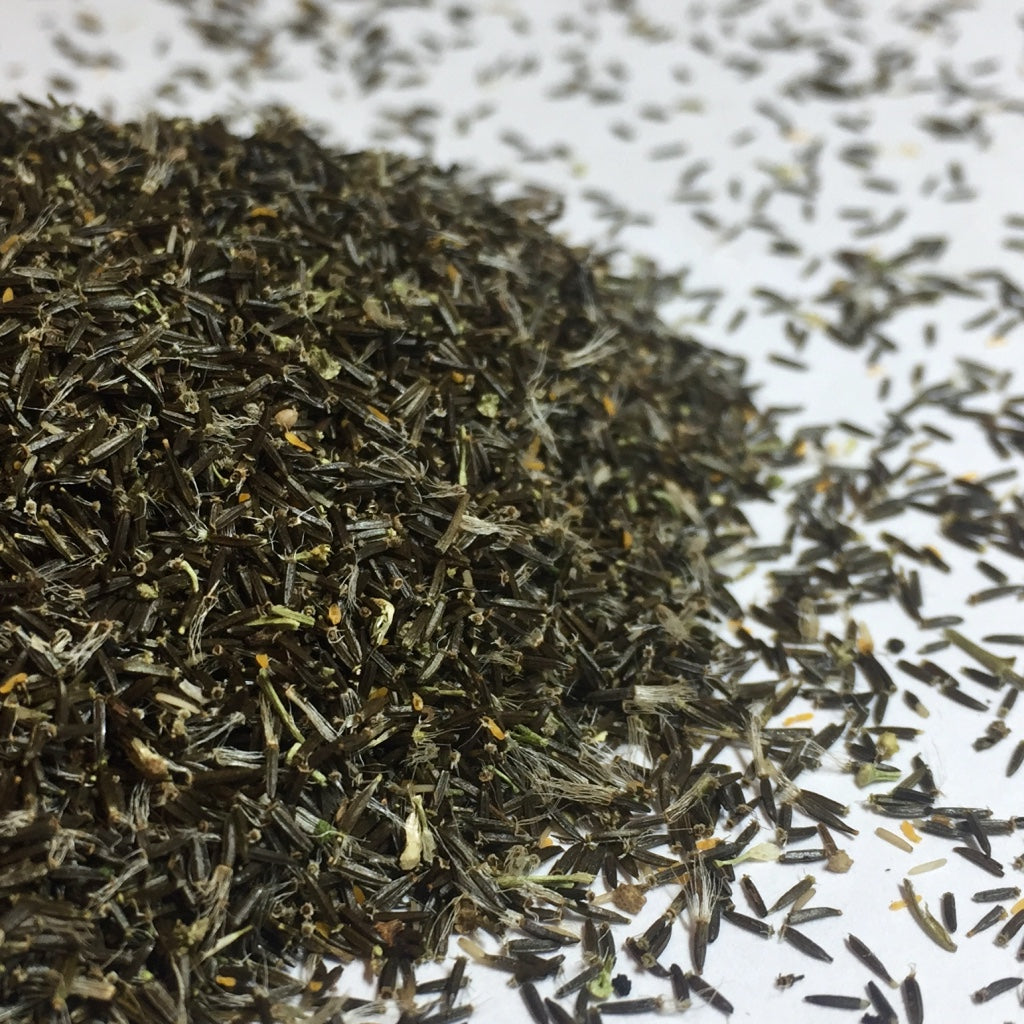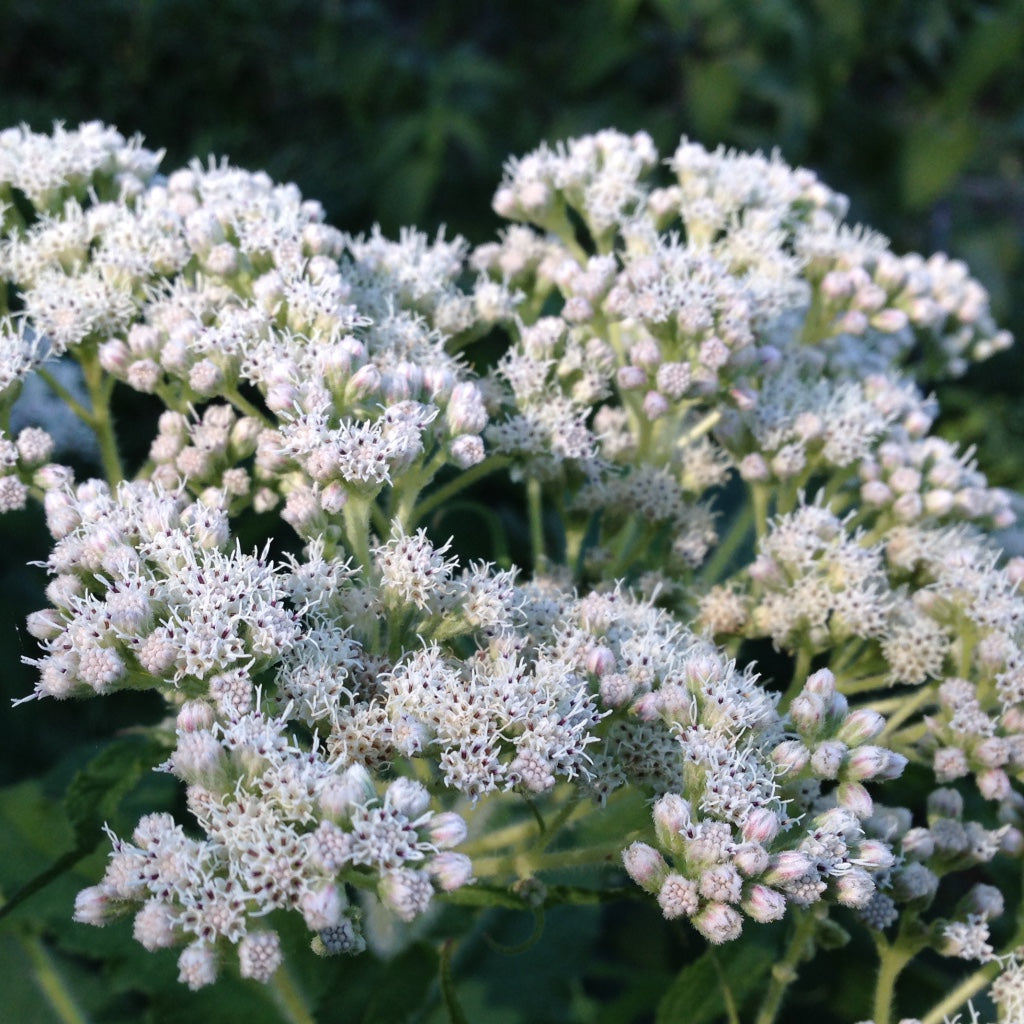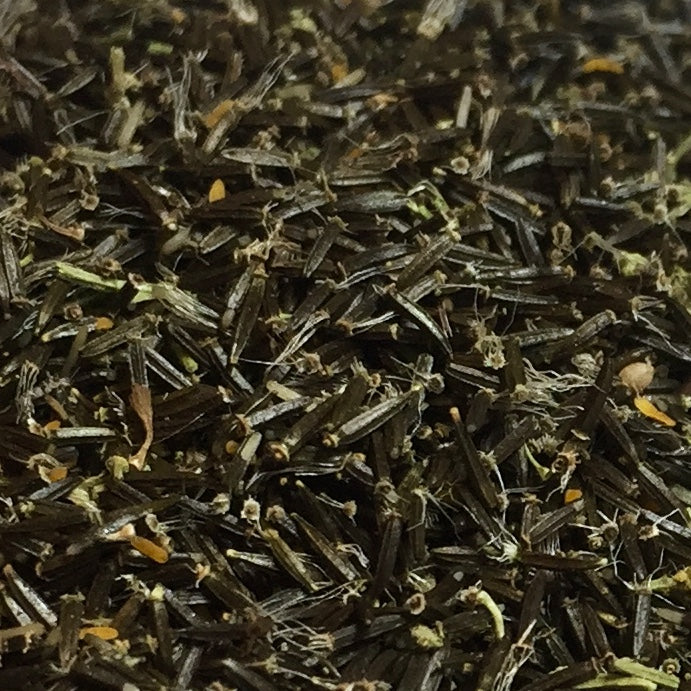Boneset (Eupatorium perfoliatum)
List Price: $4.00
Couldn't load pickup availability
White-bloomed colonies of Eupatorium perfoliatum bring a frothy brightness to the late summer and early autumn wetland landscape. Its common name refers to its historical use in setting bone fractures, though it has also been used as a tonic for fevers and flus. In Indigenous tradition, the fused, opposite leaves of Boneset indicated their ability to strengthen bones. Another traditional use of this bitter herb has been as a diaphoretic, especially put to use in the time of Breakbone Fever (now known as Dengue Fever) to alleviate such high temperatures that one’s very bones ached. This too was the case in the Spanish influenza epidemic of 1918-19. The accessibility of nectar from the spreading hairs of their blossoms makes them a favorite for unusual species of wasps and flies, as well as a variety of other pollinators.
This plant is native to the Eastern United States and Canada, though its recorded history goes back as far as 100 BCE, spanning through Europe and Asia Minor. Often associated with protection, Eupatorium perfoliatum was once hung over doorways to discourage spirits. Inversely, however, Chippewa hunters would utilize the root fibers of Boneset in charms to attract deers while hunting. The genus Eupatorium can be traced back to the king of Pontus in Asia Minor from 120 to 63 BCE, Mithridates Eupator. According to lore, he fled to the woodlands to escape the murderous wrath of his mother. Acclaimed for his herbal skill, he consumed small amounts of poisonous plants in order to build up an immunity (while boneset can be safely taken in the form of tinctures or teas, eating its fresh vegetative growth could have toxic effects). The 17th-century English herbalist Culpepper advised burning this Saturn-ruled plant to dispel wasps or fly infestations. Unsurprising for a plant that once was as ubiquitous as modern aspirin, Boneset symbolizes gratitude in the language of flowers.











